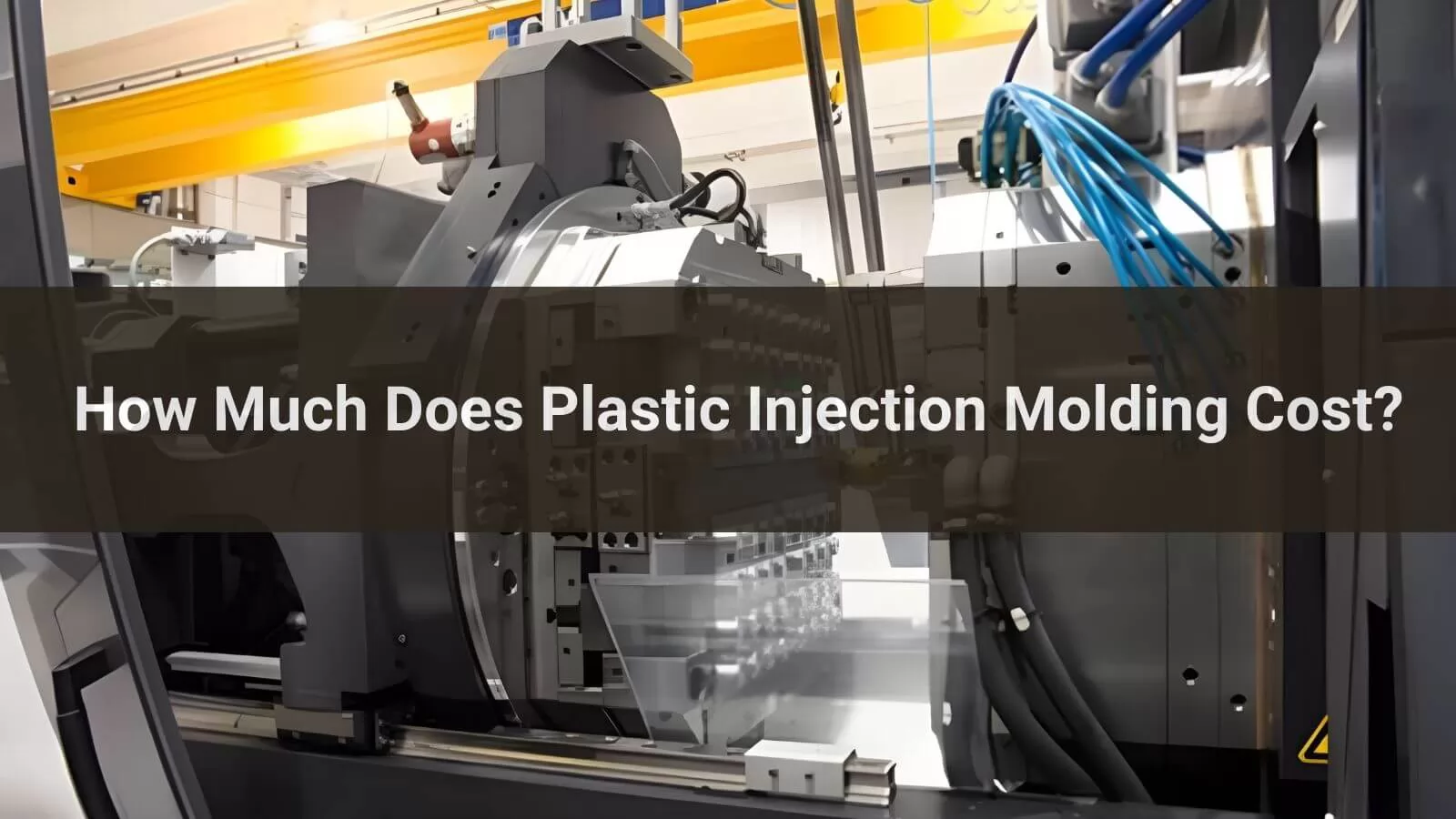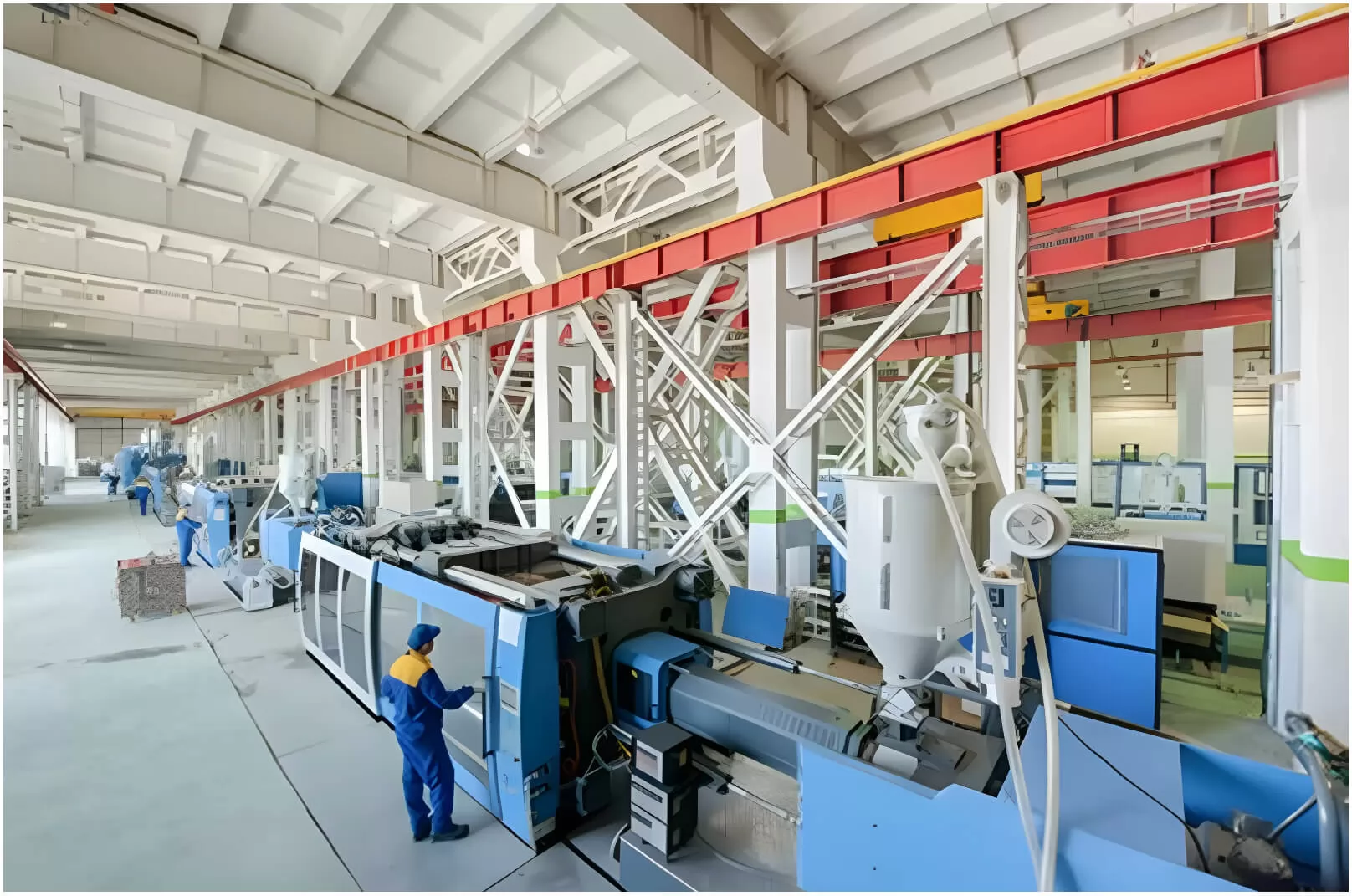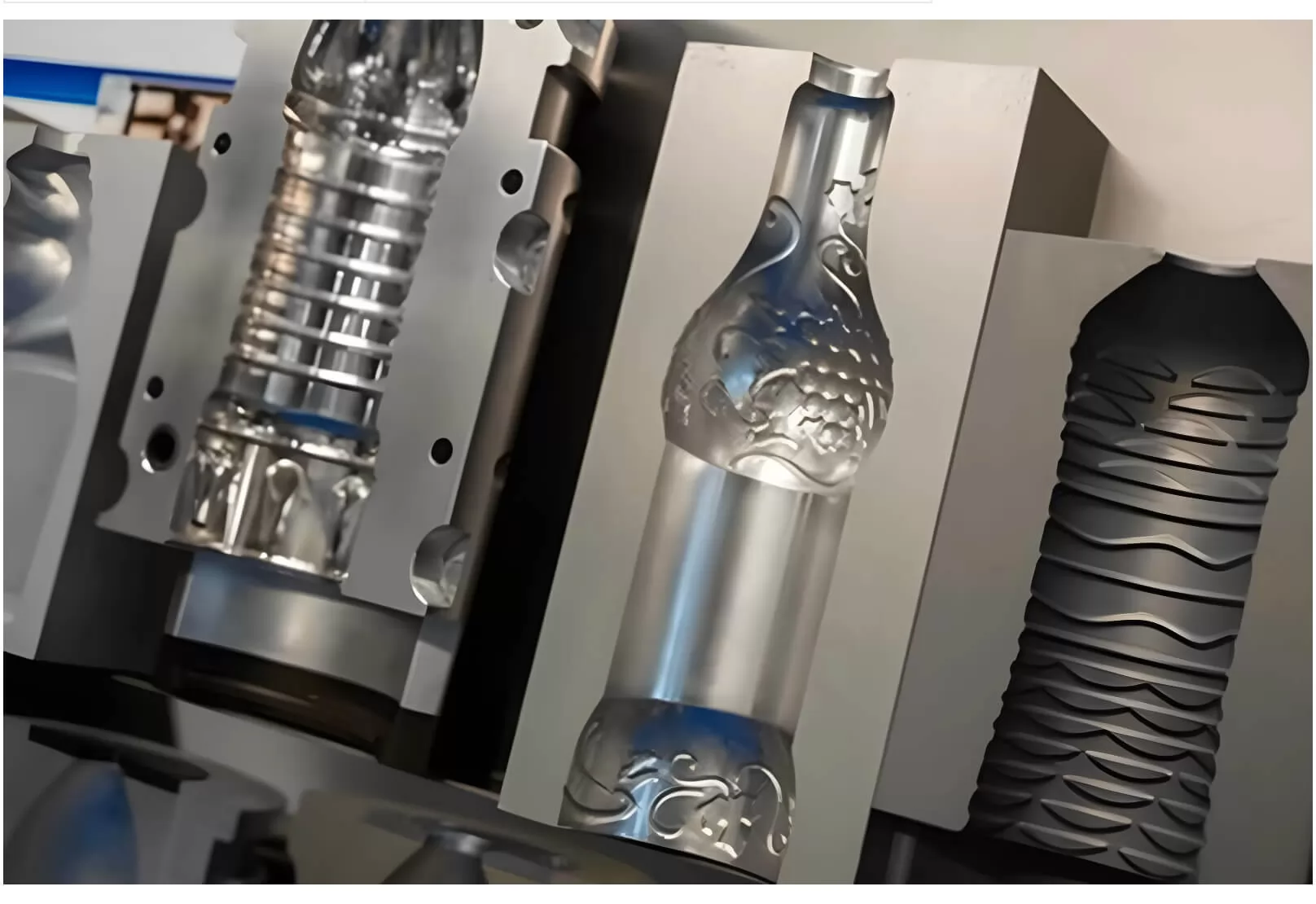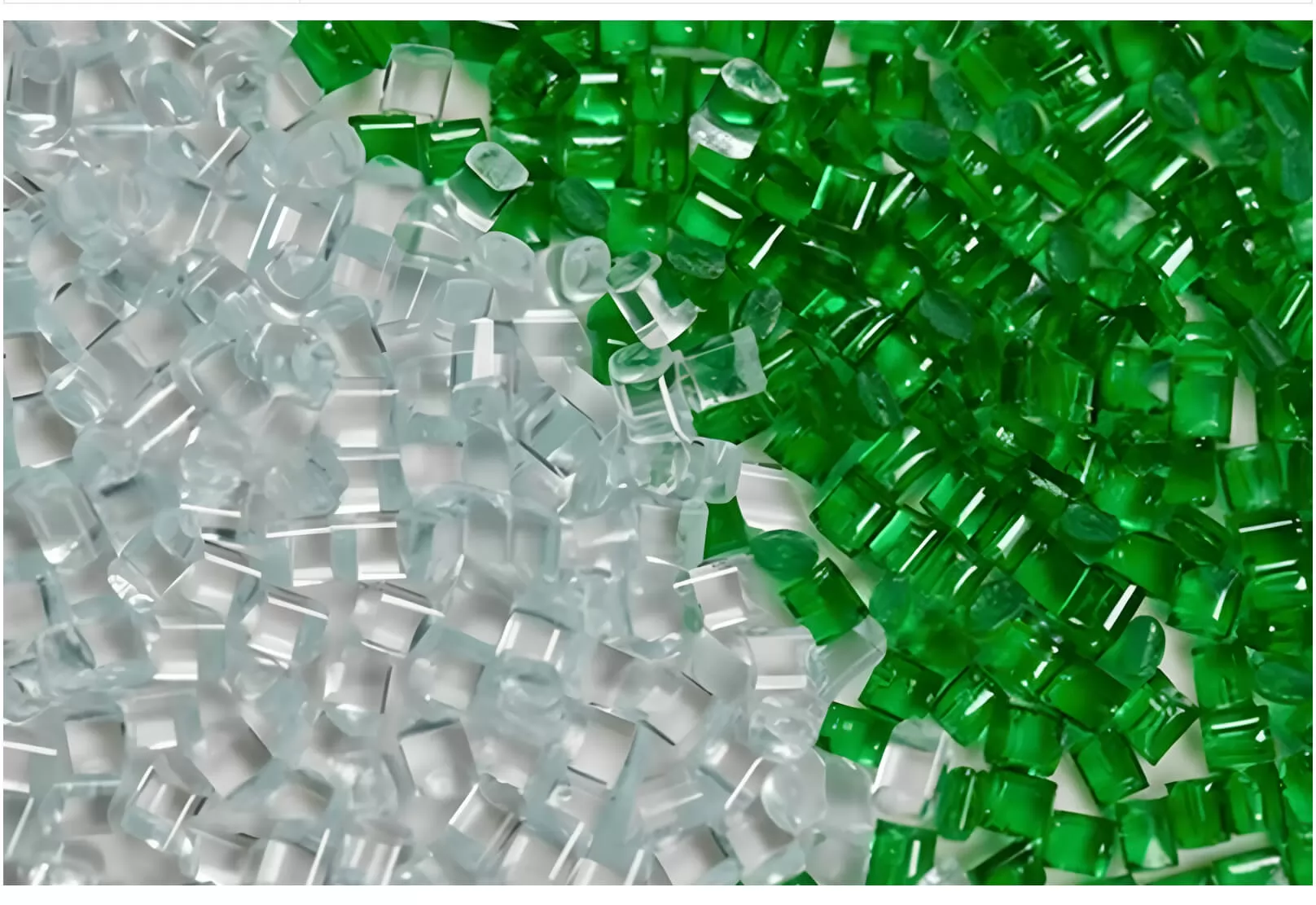
Plastic injection molding is a widely used manufacturing process for producing plastic parts by injecting molten material into a mold. The cost associated with this technique can vary significantly based on various factors, including the complexity of the design and the type of plastic used.
Understanding the cost elements of plastic injection molding is crucial for entrepreneurs and manufacturers looking to balance quality with budget constraints. Unveil the intricacies behind pricing models and discover how to optimize costs while maintaining high production standards by delving deeper into this insightful exposition.
How Much Does Plastic Injection Molding Cost?
When discussing plastic injection molding costs, the figure is not set in stone and varies widely depending on several factors, such as part complexity and production quantity. However, to give a general sense of expenditure for this manufacturing process, initial project costs can range from a few thousand dollars for small, simple parts to hundreds of thousands for large, complex items. This cost comprises expenses for design work up front, prototyping, testing, and tooling before mass production even begins. Recurring costs include the price for materials used in each unit, running the machinery, labor charges, and maintenance over time.
Each project demands a unique assessment to provide an exact quote; thus understanding the typical cost constituents without detailed specifics is only giving a broad-strokes idea of potential outlay. Here we will focus solely on breaking down how much plastic injection molding itself might cost when considering initiating such a project.
Injection Molding Cost Overview
| Cost Component | Typical Price Range (USD) |
|---|---|
| Small-scale production molds | $1,000 - $10,000 |
| Production-grade molds | $10,000 - $100,000+ |
| Mold Design | $1,000 - $25,000+ |
| Prototype Molds | $1,000 - $5,000+ |
| Raw Material per pound | Polymer-dependent ($0.50-$25) |
| Hourly Machine Operation | $30 - $150 |
| Labor Costs per hour | Varies by region |
Is Injection Molding Expensive?
The cost of plastic injection molding can vary significantly depending on several factors. Injection molding is considered a cost-effective manufacturing process for high-volume production due to its ability to produce a large number of parts with consistent quality. However, the initial setup and tooling costs can be relatively high, potentially making it expensive for low-volume projects.
What factors determine the cost of plastic injection molding?
When evaluating the overall cost of plastic injection molding, a comprehensive overview is critical to understand the various expenses involved. The total cost is influenced by several factors such as the price of equipment, mold expenses including design and manufacturing, material costs, and additional services. For clarity, categorizing each main cost driver allows for a better grasp of injection molding economics.
1.Cost of Equipment
The equipment required for plastic injection molding can represent a significant capital investment. Specific costs vary tremendously based on the size, precision, and features of the machinery. A basic small-scale injection molding machine can start from $10,000, while larger machines designed for high-volume production can cost upwards of $100,000 or more. The price escalates as you incorporate enhanced features such as increased clamping force—necessary for making larger parts—and improved control systems that offer finer control over the molding process.
For instance, a mid-range vertical or horizontal injection press with a shot capacity of around 40-50 ounces and clamping force between 100-300 tons may range between $60,000 to $80,000. In contrast, large tonnage machines with clamping force exceeding 500 tons would likely surpass the $200,000 mark.
An all-electric injection molding machine known for energy efficiency and precision could be more expensive than its hydraulic counterpart by approximately 20%, leading to initial costs anywhere from $50,000 to several hundred thousand dollars depending on size and specifications.
Servo-hydraulic machines that provide energy-saving benefits while retaining some cost-effectiveness relative to fully electric models might represent a middle ground in terms of price and performance, ranging from around $30,000 to over $150,000.
While these figures offer a rough idea about the costs involved in procuring equipment for plastic injection molding operations, the specific costs will ultimately depend on customization for particular applications and additional system components like robotics or conveyor belts.
| Type of Equipment | Basic Price Range | Notes |
|---|---|---|
| Small-scale Injection Machine | Starting at approx. $10k | Appropriate for small-scale production |
| Mid-range Injection Molding Machine | $60k - $80k | For medium-sized parts with moderate production volumes |
| Large-tonnage Molding Machines | Starting above $200k | Necessary for large part productions |
| All-Electric Injection Machines | From approx. $50k into several hundred thousand | Higher initial cost but energy-efficient & precise |
| Servo-Hydraulic Injection Machines | Approx. from $30k - over $150k | Balance between cost-efficiency and energy savings |
- These prices are indicative as of early 2024.
- Additional customizations and sophisticated control mechanisms can further escalate costs.
- Operational lifespan, maintenance expenses, usability across different molds or diverse polymers might impact the overall economic choice.
2.Cost of Mold
When assessing the cost of creating molds for plastic injection molding, several key pieces of equipment contribute significantly to the total expense. These include computer numerical control (CNC) machines, electric discharge machines (EDM), and 3D printers.
CNC Machines: The use of CNC machining in mold-making is fundamental, offering precision cutting of metals like steel or aluminum to form the desired mold shape. Costs for a quality CNC machine that can handle this task typically range from $50,000 to over $200,000, depending on its capabilities and size.
EDM Machines: EDM is another critical technology used in the finishing process for intricate molds or creating more complex geometries that are difficult to achieve with CNC machining alone. EDM machines involve higher costs due to their specialized capabilities; a new machine can cost anywhere between $80,000 and more than $150,000.
3D Printing: Also known as additive manufacturing, 3D printing has become an increasingly popular method for producing less costly prototype molds and even production-grade molds for limited runs or simpler parts. A professional industrial 3D printer’s price point starts around $10,000 but can easily go up into hundreds of thousands of dollars based on performance characteristics and print capacity.
The initial mold design and complexity directly influence the total cost of mold making—factoring both equipment uses and labor time. It’s necessary to consider these aspects when planning budgets for plastic injection molding projects.
| Equipment Type | Function | Low-End Cost Estimate | High-End Cost Estimate |
|---|---|---|---|
| CNC Machine | Precision cutting of mold materials like steel or aluminum | $50,000 | >$200,000 |
| EDM Machine | Finishing intricate molds; complex geometry creation | $80,000 | >$150,000 |
| 3D Printer | Producing prototype molds; limited production runs | $10,000 | Hundreds of thousands |
3.Cost of Injection Molding Material
The cost of materials for plastic injection molding can vary significantly based on the type of plastic, additives used, and the quantity purchased. High-volume orders can significantly reduce per-unit material costs due to economies of scale.
Polypropylene (PP) is one of the most commonly used plastics in injection molding due to its versatility and low cost, with prices that can range from $1.10 to $1.50 per pound.
Acrylonitrile Butadiene Styrene (ABS), known for its toughness and impact resistance, can be more expensive than PP, with costs typically between $1.50 to $2.50 per pound.
High-density polyethylene (HDPE) presents an economical option for sturdy applications, costing approximately $1.25 to $1.50 per pound.
Polycarbonate (PC), offering high strength and transparency, may incur higher costs at about $2.00 to $3.25 per pound.
Nylon, recognized for its wear resistance and strength is often priced in the range of $2.00 to $3.00 per pound.
Premium or specialized materials like liquid silicone rubber (LSR) or engineering-grade resins can see a significant increase in price due to their unique properties or performance characteristics; such prices might span from $5.00 to over $10.00 per pound depending on the grade and specifications.
Additionally, custom colorants or additives like UV inhibitors or flame retardants can increase the base price of these materials by a fraction or sometimes even double the cost depending on their concentration within the mix.
| Material | Approximate Cost Per Pound |
|---|---|
| Polypropylene | $1.10 - $1.50 |
| ABS | $1.50 - $2.50 |
| HDPE | $1.25 - $1.50 |
| Polycarbonate | $2.00 - $3.25 |
| Nylon | $2.00 - $3.00 |
| LSR & Specialties | >$5.00 |
4.Cost of Service
The service costs associated with plastic injection molding typically involve labor, project management, engineering services, and potentially additional processing like post-molding assembly or painting. Labor costs vary widely depending on the region but generally are one of the major expenses in the overall cost structure. Experienced engineers and tool makers are essential for designing molds and optimizing injection molding processes; however, their expertise often comes at a premium.
Project management can include everything from consultations at the outset of a project to managing the complexities and logistics involved in production scheduling. Because proper project management ensures efficiency and quality, this is not an area where cutting corners would be advisable.
Engineering services encompass mold design revisions, simulations for flow analysis to optimize part quality and reduce possible defects, as well as any troubleshooting during the process that requires engineering insight.
Post-processing services are also part of the overall service costs if a molded part requires further work after it has been ejected from the mold. This could include actions such as ultrasonic welding, machining, pad printing or other forms of decoration/finishing.
Lastly, associated overhead costs factor into service fees. This can include anything relating to facility operations where molding occurs, maintenance utilities, administrative personnel — which all together contribute indirectly to manufacturing each product.
| Service Type | Projected Cost Range |
|---|---|
| Labor per Hour | $15 - $60 (depends on regional wages) |
| Project Management | 10-20% of total project cost |
| Engineering Services | Varies with complexity |
| Post-Molding Processes | Additional $0.10-$1 per piece (on average) |
| Overhead Costs (indirect) | Percentage of total operating expense |
Variables that Impact the Injection Mold Cost
The cost of injection molds can be significantly influenced by several variables, which include the size and design of the part, the production volume, as well as the part volume and the number of cavities within the mold.
| Factor | How It Affects Cost |
|---|---|
| Part Size | Larger sizes increase mold size & machining costs |
| Part Design | Complexity adds to design time & machining difficulty |
| Production Volume | Higher volume lowers cost per unit via amortization |
| Part Volume/Cavities | More cavities increase upfront costs but improve efficiency |
1.Part Size
Larger parts require more material, which directly increases the raw material expenses. Additionally, larger parts may necessitate the use of larger injection molding machines, which are more expensive to purchase and operate due to their increased energy consumption, higher maintenance costs, and greater upfront investment.
Besides material costs, large parts can also extend cycle times in the manufacturing process. The longer it takes to mold a part, the less efficient the production line becomes, thus increasing labor costs. Moreover, handling and shipping larger parts could lead to higher logistics expenses compared to smaller components that take up less space and are easier to transport.
It’s essential for manufacturers to carefully consider part size in relation to their budget constraints and project goals—optimizing design for material distribution and minimizing superfluous volume without compromising on part integrity or functionality.
| Factor | Impact on Injection Molding Costs Due to Part Size |
|---|---|
| Material Usage | Increased for larger parts leading to higher raw material costs |
| Machine Requirements | Larger machines needed for bigger parts which raise initial investment |
| Energy Consumption | Typically higher for large-part production adding to operational expenses |
| Cycle Time | Extended for large parts translating into increased labor costs |
| Logistics | More challenging and potentially costlier due logistical considerations |
2.Part Design
Precise geometries, intricate details, and the need for tight tolerances can increase the price substantially. Design elements such as undercuts, threads, or thin walls may require specialized tooling or additional mold components like sliders and lifters which elevate the costs. Simplifying a part’s design by minimizing undercuts or eliminating non-essential features can be effective strategies to reduce overall expenses associated with its production.
Consideration should also be given to the type of surface finish required, as this can affect both the tooling and production processes. Standard finishes are generally less expensive whereas specialized textures or highly polished surfaces will incur higher costs.
Draft angles—tapered edges that ease the removal of parts from molds—are another critical design aspect to consider from a cost perspective. Increasing draft angles wherever possible will facilitate easier demolding, potentially reducing cycle times and minimizing wear on molds thus contributing to longer mold life and reduced maintenance costs.
Optimization for manufacturability (DFM) is an essential process that involves tweaking designs to ensure cost-effective production without compromising on functionality or aesthetic standards. Early collaboration between product designers and mold manufacturers during DFM can help identify potential issues before committing to expensive tooling, thereby saving both time and money in the long run.
Lastly, integrating multiple parts into a single component not only reduces assembly time but also cuts down on the number of molds required for production. This approach called part consolidation is an effective way to optimize injection molding projects financially while maintaining product integrity.
| Design Aspect | Impact on Cost | Strategy for Cost Reduction |
|---|---|---|
| Complexity | Increases cost due to complex tooling needs | Simplify geometry and minimize non-essential features |
| Undercuts | Requires specialized tooling; increases cost | Design parts with fewer undercuts |
| Surface Finish | Specialty finishes add expense | Opt for standard finishes when possible |
| Draft Angles | Insufficient angles increase mold wear and cycle time | Increase draft angles for easier demolding |
| DFM | Poor design choices lead to higher costs downstream | Consult early with mold manufacturers; optimize design for manufacturability |
| Part Consolidation | Reduces number of separate molds needed; cuts assembly costs | Combine multiple pieces into single parts when designing |
3.Production Volume
As production volumes increase, the cost per unit decreases due to the economies of scale. This is because the initial costs associated with creating the mold and setting up the machinery are distributed over a larger number of parts. Conversely, for small volume runs, these fixed costs represent a higher proportion of the total cost, leading to an increased cost per unit.
For manufacturers considering injection molding for their products, it’s essential to assess the quantity they intend to produce to understand how it will impact pricing. Large production runs often justify the hefty upfront investment in tooling and setup since these costs are amortized over many units. In contrast, if only a small number of parts are needed, alternative manufacturing processes or strategies may be more cost-effective.
Tailoring production volumes to align with demand forecasts can circumvent underutilization or excessive expenditure for unneeded inventory. It is also worth noting that larger production volumes can lead not only to a reduced unit cost but potentially also to operational efficiencies within the process itself.
| Production Volume | Mold Cost Amortization | Cost Per Unit | Economies of Scale | Operational Efficiencies |
|---|---|---|---|---|
| Low Volume | High | High | Minimal | Less likely |
| Moderate Volume | Medium | Moderate | Noticeable | Possible |
| High Volume | Low | Low | Significant | Likely |
4.Part Volume and Cavities
The concept of part volume and cavities is a crucial determinant in the cost of plastic injection molding. Essentially, part volume refers to the size of the individual piece being molded, while cavities indicate the number of parts produced per mold cycle. A larger part will consume more material and may require a longer cooling time, thus impacting cycle time and cost.
Moreover, the number of cavities within a mold directly influences production efficiency. A single-cavity mold produces one component per cycle, whereas a multi-cavity mold can produce several parts simultaneously. Although increasing the number of cavities can escalate upfront mold costs due to greater complexity during manufacture, it can dramatically reduce the unit cost by improving productivity.
Additionally, when deciding on the number of cavities, it’s vital to consider expected production volumes. For low-volume production runs, a single cavity may suffice and be more cost-effective. Conversely, for high-volume demands, investing in a multi-cavity mold could yield considerable savings over time despite its higher initial cost.
While optimizing for part volume and the number of cavities is pivotal for cost efficiency, it must also align with quality standards - balancing speed against potential defects or variability in each shot.
| Factor | Impact on Injection Molding Cost |
|---|---|
| Larger Part Volume | Increases material consumption; potentially longer cooling times which increase cycle times; higher costs |
| Single-Cavity Mold | Lower upfront mold cost; higher cost per unit due to lower efficiency |
| Multi-Cavity Mold | Higher upfront mold cost; reduced cost per unit through increased production efficiency |
| Low-Volume Production | Single cavity might be more efficient and economical |
| High-Volume Production | Multi-cavity molds are likely to be more efficient and provide long-term savings |
How to Reduce Injection Molding Costs
Reducing the costs associated with plastic injection molding can be achieved through several strategic approaches aimed at efficiency and economy of scale. Streamlining the part design process, optimizing material use, minimizing excess production, and controlling overheads are key areas where cost reductions can be realized.
A crucial step in cost reduction is simplifying the design of the part. Complex designs generally require complex molds which are time-consuming and expensive to manufacture. Simplifying a design without compromising on functionality can lead to a more cost-effective mold with fewer parts and less maintenance required over time.
Consideration of materials used for both the mold and part construction can also influence costs. Choosing a mold material that balances longevity with cost, like aluminum for shorter runs, or opting for premium steel for high-volume runs ensures mold longevity and performance. Likewise, selecting an optimal thermoplastic resin that meets the requirements of the product while remaining economical will reduce overall expenditure.
Production volume directly impacts mold cost; hence, accurately estimating production needs helps in determining whether a single-cavity or multi-cavity mold is more economical. While higher upfront costs are associated with multi-cavity molds, they provide greater output rates hereby reducing the per-part cost significantly for large production volumes.
Finally, minimizing waste during production reduces raw material costs. Implementing strategies such as just-in-time production or reusing scrap material when feasible contributes to overall savings.
Cost-Reduction Strategies Summary Table
| Strategy | Description | Potential Savings |
|---|---|---|
| Part Design Simplification | Creating simpler designs that meet functional requirements to reduce mold complexity | High |
| Material Selection | Choosing appropriate materials for the part and mold that balance quality with cost | Moderate |
| Accurate Production Volume Estimation | Assessing order quantities accurately to select single or multi-cavity molds | High (in large volumes) |
| Mold Material Optimization | Using aluminum for short runs or durable steel for high-volume requirements | Varies depending on usage |
| Raw Material Waste Minimization | Implementing efficient manufacturing processes and recycling unused materials | Moderate up to significant |
By applying these methods thoughtfully, companies can achieve substantial savings in plastic injection molding projects without compromising product quality.
In conclusion
In conclusion, the cost of plastic injection molding varies widely depending on several factors including part design, complexity, production volume, and material selection.
If you’re looking to make an informed decision for your next project, we invite you to consult with our experts. By understanding your specific needs and the nuances of plastic injection molding, we can help streamline your production process and optimize costs. Contact us today to learn more about our services and how we can assist in bringing your product ideas to life efficiently and economically.





